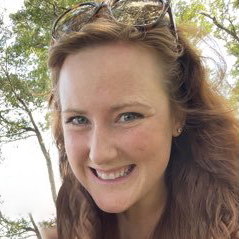
Case Study: Treatment Options for the Newly Diagnosed Patient with CLL
Last Updated: Wednesday, October 25, 2023
Amber Koehler, PA-C, of Mayo Clinic Cancer Center, and Josie S. Montegaard, NP, of Dana-Farber Cancer Institute, introduce a case study of Jim, a 60-year-old man diagnosed with CLL, and discuss front line treatment. Amber and Josie review the symptoms that trigger the need for treatment and the factors that determine the best treatment option. They also share how they assess the risk of tumor lysis syndrome and the importance of counseling patients on medication reactions, along with effective ways of managing those reactions.
Meet the faculty

Amber Koehler
PA-C
Mayo Clinic Cancer Center
Amber Koehler, PA-C, is the Mayo Clinic enterprise lead CLL APP and an Assistant Professor of Medicine as well as the Outpatient APP Research/Education Lead in the Division of Hematology at Mayo Clinic Cancer Center in Rochester, Minnesota. She specializes in caring for patients with CLL and Richter transformation and is passionate about patient education as well as optimizing supportive care and quality of life in patients with CLL.

Josie Montegaard
NP
Dana-Farber Cancer Institute
Josie S. Montegaard, NP, is a nurse practitioner in the CLL Center at Dana-Farber Cancer Institute, where she cares for a full panel of patients with CLL and Richter syndrome. She has participated in many investigator-led and registration CLL trials and holds a particular interest in the development of more defined length treatment options.
References
- Hallek M, Cheson BD, Catovsky D, et al. iwCLL guidelines for diagnosis, indications for treatment, response assessment, and supportive management of CLL. Blood. 2018;131(25):2745-2760. doi:10.1182/blood-2017-09-806398
- Al-Sawaf O, Zhang C, Tandon M, et al. Venetoclax plus obinutuzumab versus chlorambucil plus obinutuzumab for previously untreated chronic lymphocytic leukaemia (CLL14): follow-up results from a multicentre, open-label, randomised, phase 3 trial. Lancet Oncol. 2020;21(9):1188-1200. doi:10.1016/S1470-2045(20)30443-5
